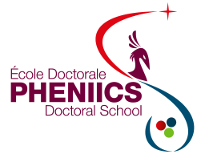Orateur
M.
Mehdi DRISSI
(CEA/SPhN)
Description
Even though the physics of atomic nuclei is a low-energy realization of QCD, a direct link between the two is concealed by the strongly coupling nature of QCD at low energies. Nevertheless, exploiting the separation of relevant low- and high-energy scales, chiral EFT, built only on nucleons and pions degrees of freedom, generates an implicit connection, providing a systematic framework that keeps track of the symmetries of QCD (and their breaking). As such, what is currently denoted as the ab initio nuclear A-body problem is nothing but chiral EFT implemented in the A-body sector.
This theoretical scheme has to be based on an ordering of the term of the Hamiltonian (the so-called power counting), respecting the symmetries, that have to be kept at a certain order of truncation. Such a power counting should ensure several properties such as renormalizability at each order and control of the uncertainties introduced by the truncation. This is not the case with the classical (Weinberg) power counting based on a simple dimensional analysis. However for simpler Hamiltonian such as pionless EFT it has been partially done. Studying fully in details this simpler theory will allows us to better understand EFT mechanisms before tackling the more challenging case of chiral EFT.
One important aspect is the application to many-nucleon systems where many-body methods introduce additional theoretical uncertainties. My work here would be to verify the control of those uncertainties and the renormalizability of pionless EFT in the cleaner case of nuclear matter and then to finite medium mass nuclei using self-consistent Green function many-body approach. It should enable us also to assess if and where contributions beyond three-body terms are necessary for the truncated Hamiltonian to have those good properties.
Auteur principal
M.
Mehdi DRISSI
(CEA/SPhN)
Co-auteur
M.
Vittorio Somá
(CEA/SPhN)



